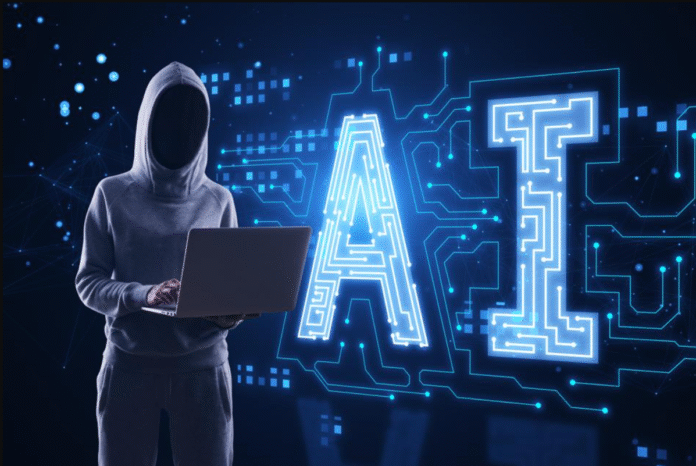AI Hacking Threats, A Growing Cybersecurity Challenge
AI hacking threats are rapidly changing the landscape of global cybersecurity. From state-backed spies to underground cybercriminals, hackers are now using artificial intelligence to accelerate their attacks. At the same time, cybersecurity experts and tech giants are deploying AI to counter these growing risks, fueling an unprecedented digital arms race.
The rise of AI hacking threats is no longer science fiction. It’s unfolding now, shaping how cyberattacks are launched, detected, and defended.
In recent months, Russia has intensified its cyber operations against Ukraine with a new AI twist. According to Ukrainian officials and cybersecurity reports, Russian hackers embedded artificial intelligence tools inside phishing attachments. Once unsuspecting victims opened the file, the AI automatically searched for sensitive data and sent it back to Moscow.
This marked the first known case of Russian intelligence deploying malicious code powered by large language models (LLMs), the same AI chatbots popular in workplaces worldwide. The incident highlights how AI hacking threats are becoming a weapon of choice for cyber warfare.

AI Hacking Threats Are Not Limited to Spies
Russian hackers are not alone in experimenting with AI. Across the globe, cybercriminals, intelligence agencies, and even corporate security teams are integrating AI into their operations.
-
Hackers use AI to scan for weaknesses in systems faster than ever.
-
Cybersecurity companies leverage AI to spot vulnerabilities before criminals do.
-
Researchers are testing how AI can strengthen, or break digital defenses.
While LLMs like ChatGPT and Google’s Gemini are still imperfect, they’re increasingly capable of turning plain language into code and analyzing massive amounts of data. The result? Skilled hackers are becoming faster and more efficient, while defenders are racing to keep pace.
Google’s Fight Against AI Hacking Threats
Heather Adkins, Google’s VP of Security Engineering, revealed that her team has been using Google Gemini to hunt for vulnerabilities since 2024. Within a year, the AI-powered project identified at least 20 critical bugs in widely used software, issues that could have otherwise been exploited by hackers.
Although these flaws weren’t groundbreaking discoveries, AI dramatically sped up the process. As Adkins put it:
“It’s the beginning of the beginning… AI is just doing what we already know how to do only faster.”
This speed advantage is exactly what makes AI hacking threats so dangerous and so essential for defenders to counter.
CrowdStrike: Tracking Global AI Hacking Threats
CrowdStrike, a leading firm, has also seen a surge in AI-powered attacks. Adam Meyers, the company’s Senior VP, warned that China, Russia, Iran, and organized cybercrime groups are all integrating AI into their hacking playbooks.
“We’re seeing more and more of it every single day,” Meyers said.
From generating realistic phishing emails to automating malware, AI hacking threats are no longer a future risk, they’re here now.
Startups Driving the AI Hacking Revolution
New companies are emerging that specialize in AI hacking. For example:
-
DreadNode: CEO Will Pearce confirmed that AI has finally reached a level where automated hacking requires minimal human adjustment.
-
Xbow: In June 2025, this AI-powered hacker became the first non-human entity to top the HackerOne U.S. leaderboard, outperforming thousands of human researchers.
Such breakthroughs show that AI hacking threats are leveling the playing field, giving both professionals and criminals more powerful tools than ever before.
Are AI Hacking Threats Helping Hackers or Defenders More?
Experts remain divided. Some believe hackers benefit the most, while others argue AI favors defenders.
At the Def Con Conference in Las Vegas, Alexei Bulazel of the White House National Security Council stated:
“AI will be more advantageous for defenders than offense—especially since the U.S. leads in advanced technology.”
He noted that most devastating cyberattacks don’t come from big tech targets but from overlooked flaws in smaller companies. AI is particularly effective at spotting these weaknesses before criminals exploit them.
The Danger of Free AI Hacking Tools
Currently, most AI hacking tools are controlled by researchers, companies, or state actors. But experts warn that if free, advanced AI penetration testing tools are released online, it could trigger chaos.
Google’s Heather Adkins warned:
“At some point, someone will release one. That’s when things get dangerous.”
Such tools could empower small-time hackers to launch devastating attacks against vulnerable businesses.

The Rise of Agentic AI in Hacking
A new frontier in AI hacking threats is Agentic AI, systems capable of taking autonomous actions such as writing and sending phishing emails, executing malicious code, or even breaching networks without human oversight.
Adam Meyers of CrowdStrike cautioned:
“Agentic AI will become the next insider threat… without guardrails, it can be abused easily.”
This signals a darker future where hackers may not even need to press a button, AI will handle the attack itself.
Conclusion: AI Hacking Threats Are Just Beginning
AI hacking threats are transforming the world of cybersecurity at lightning speed. While defenders currently appear to have the upper hand, the balance could shift quickly if advanced AI hacking tools become widely accessible.
The digital battlefield is evolving: hackers are faster, defenders are smarter, and AI is the new weapon of choice. The coming years will decide whether AI secures our future or exposes us to unprecedented risks.

